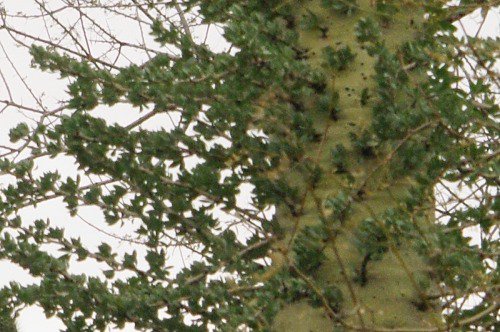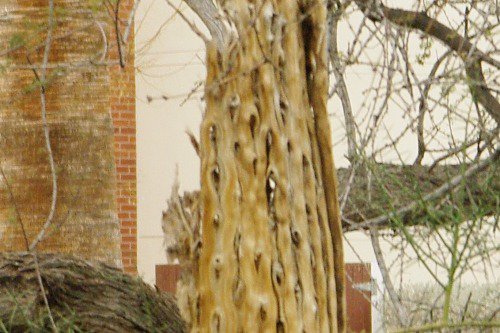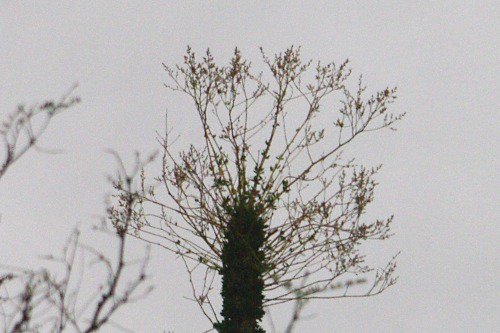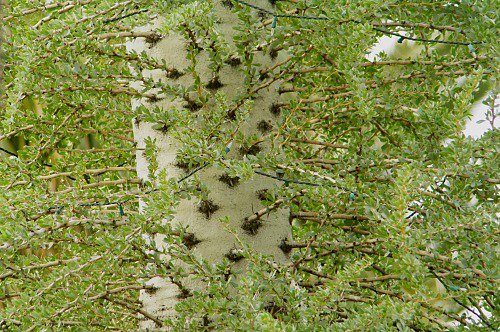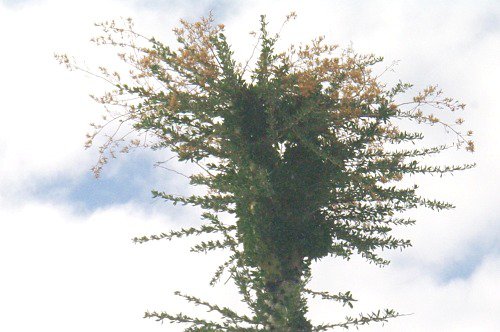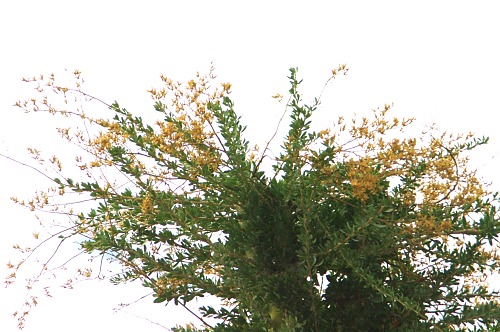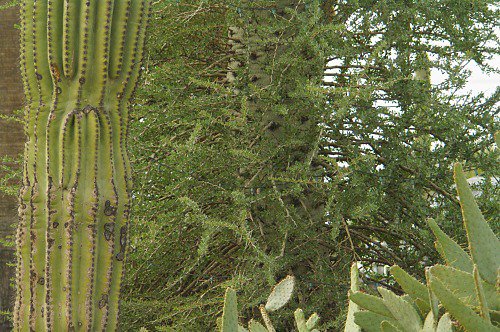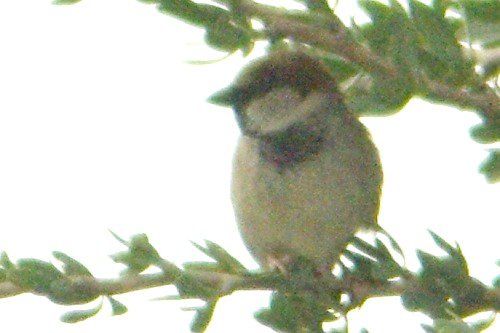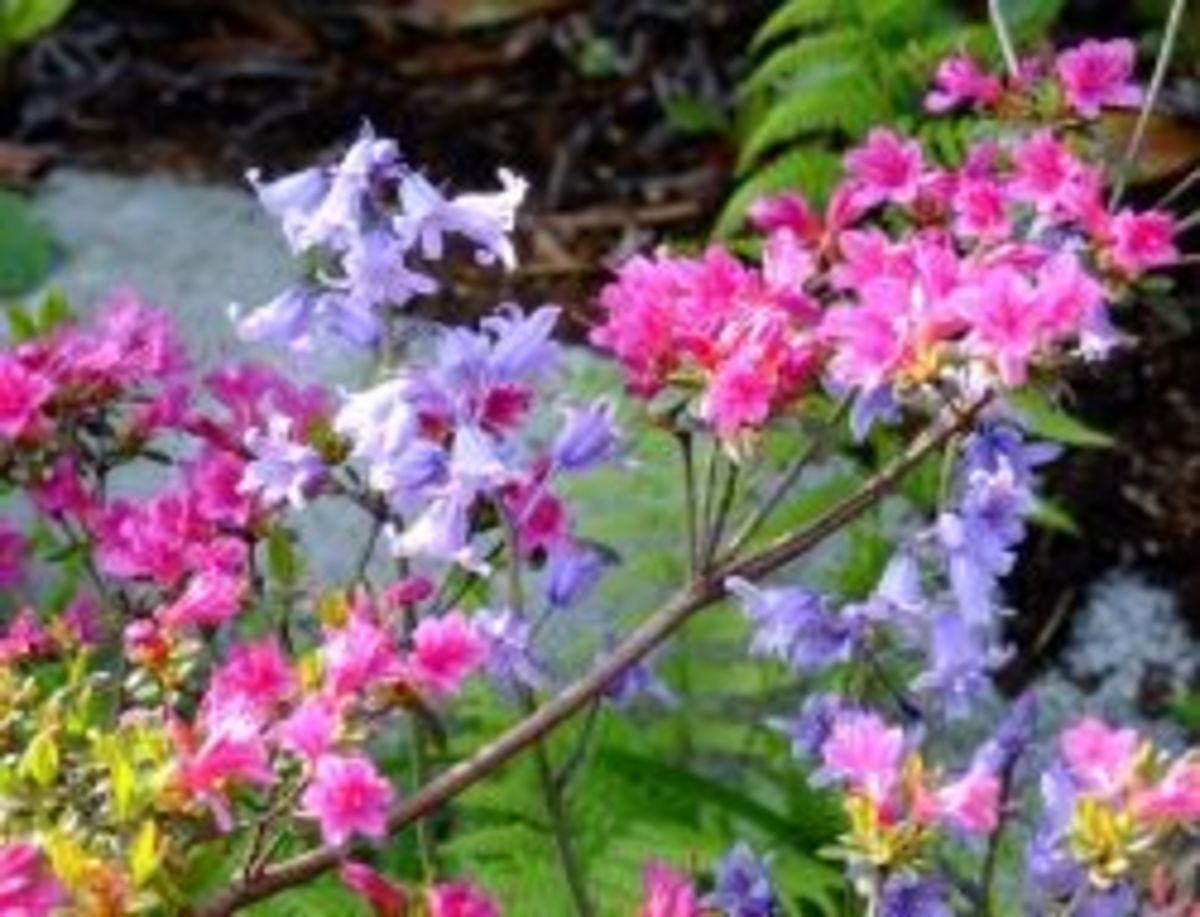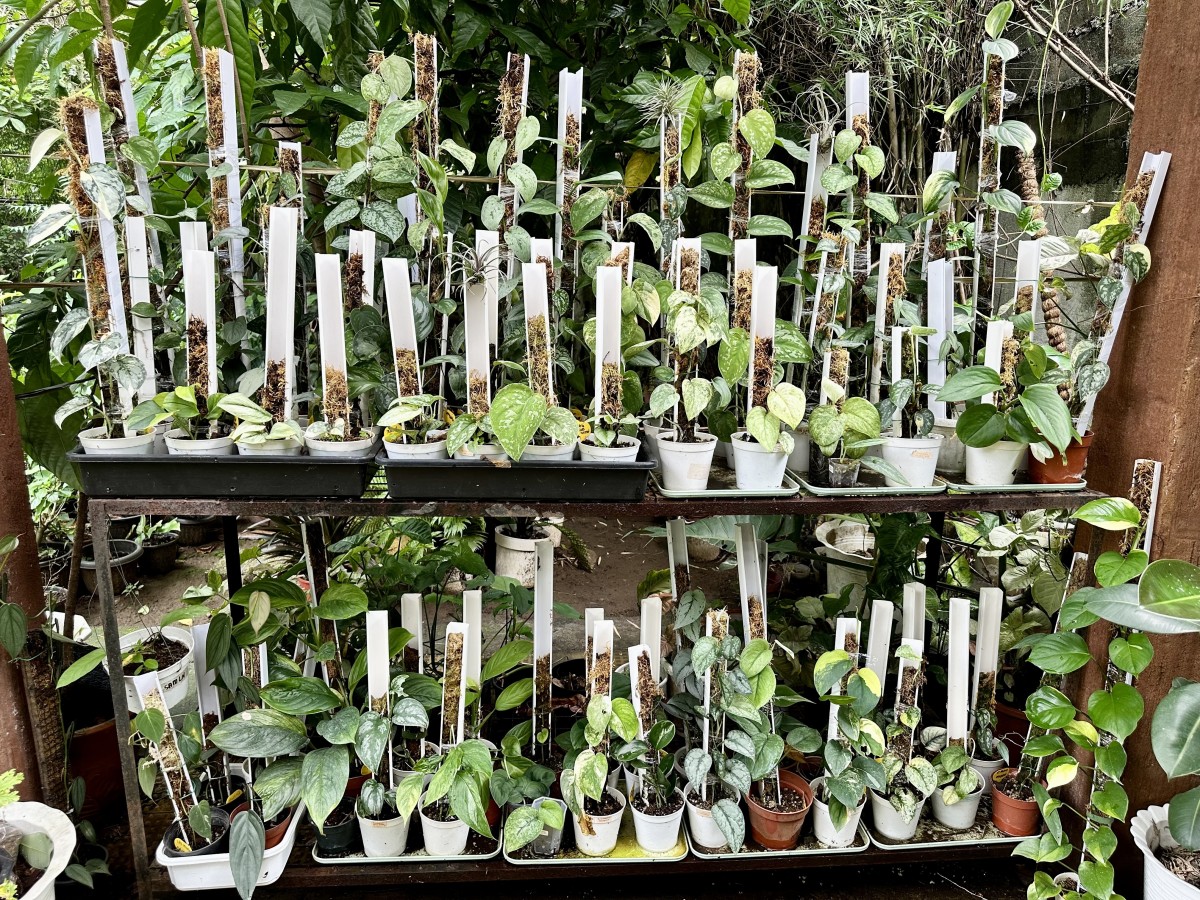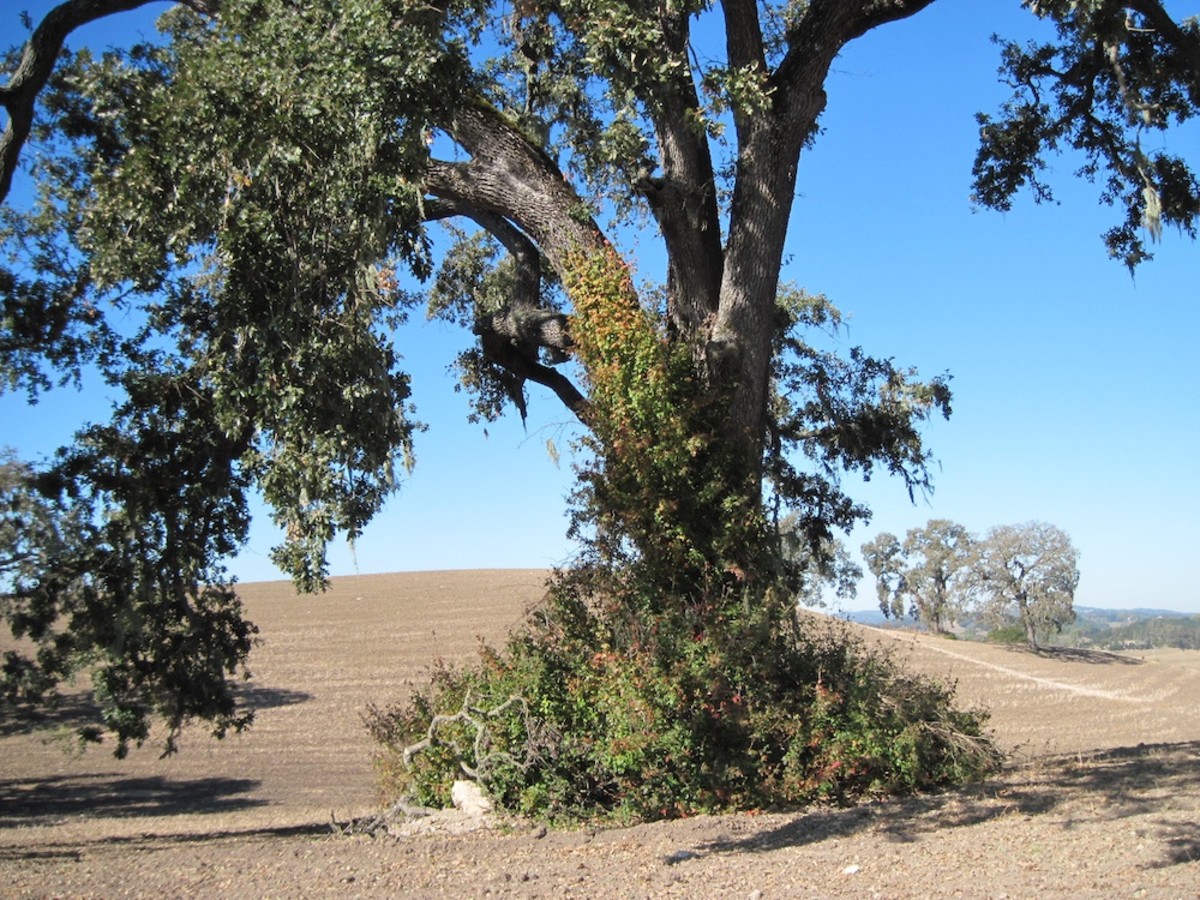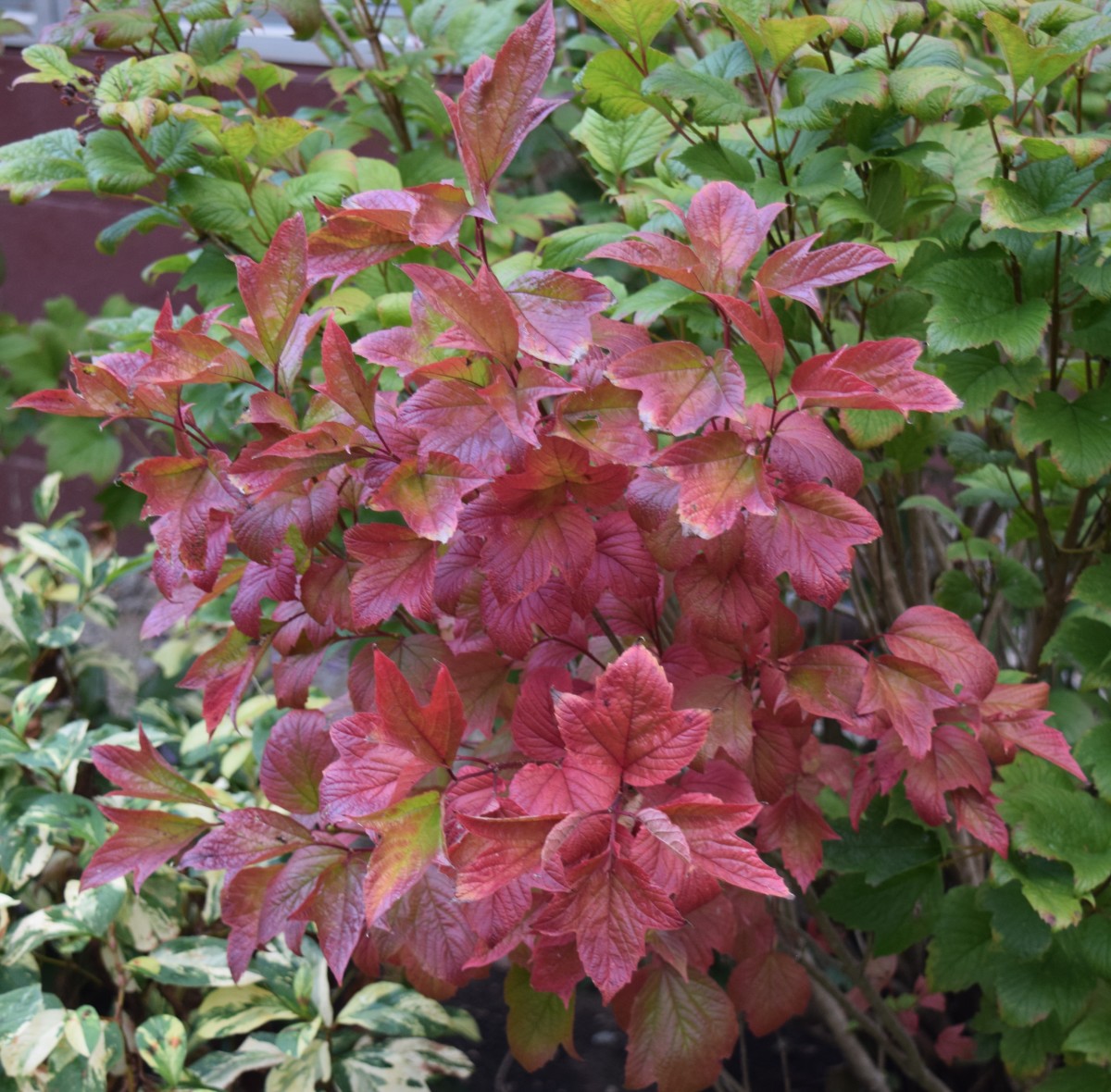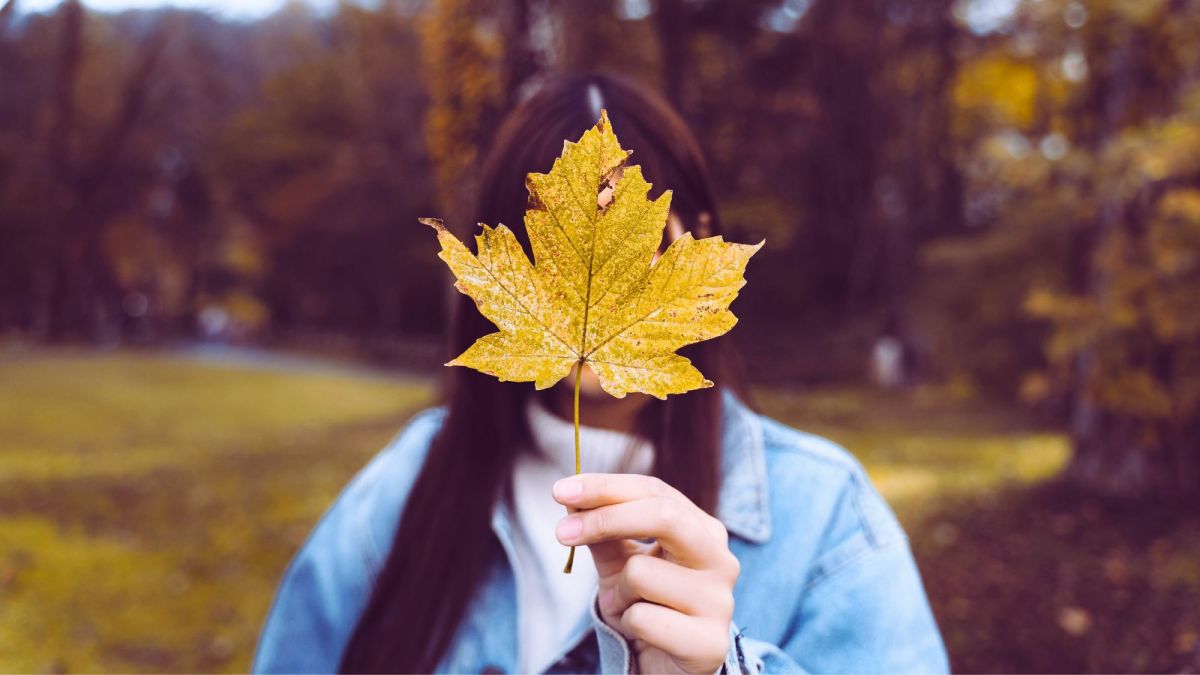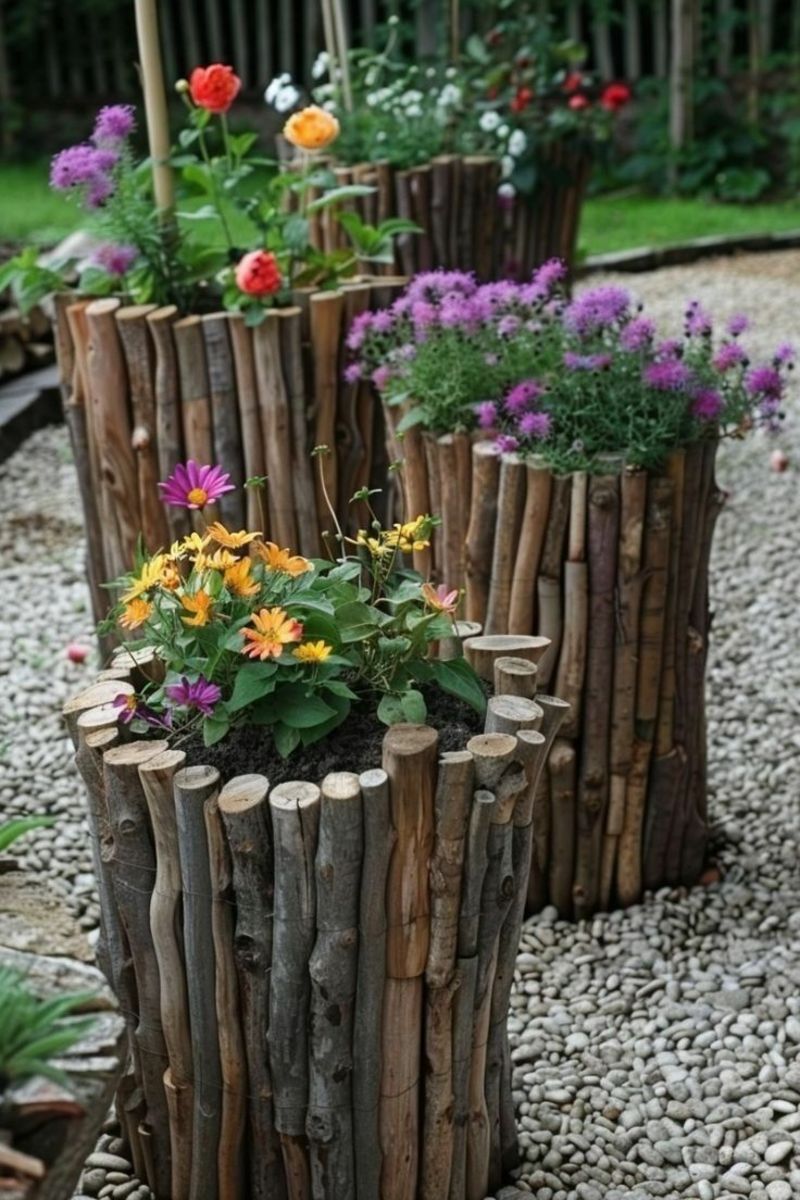Boojum Tree
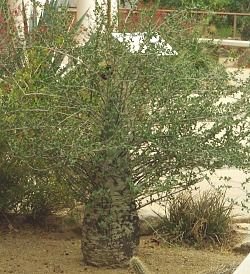
What in the World is a Boojum Tree, and Why Should I Grow One?
What in the world is a boojum tree?
I have a perverse sense of humor. But this really IS one of my favorite plants. Problem is, most of you will probably never succeed in growing one. But regard that as a challenge if you want. It's the kind of plant you can brag about.
Boojum Trees (Fouquieria columnaris) are succulents that grow almost exclusively in Baja California. There are a few growing in Sonora. All the others were transplanted, and they may do well in the Sonoran Desert floor areas, and cities such as Tucson and Phoenix. But if you have a wet climate, forget it. If you want to set up a dry greenhouse, that might work.
But keep in mind that if you decide to grow one, it won't get very big in your lifetime. Several sources claim the really tall ones might be as much as 500 or 600 years old.
A Boojum Tree looks like an upside-down green carrot, in my opinion. Apparently a lot of people agree. It was named by Godfrey Sykes, an Englishman, after the poem The Hunting of the Snark, an epic but silly nonsense poem by Lewis Carroll, of Alice in Wonderland fame. At the time he was working for/with the Desert Laboratory in Tucson, Arizona. He saw them, and exclaimed they looked just like a boojum, and the name stuck. Apparently the Seri Indians would agree with his assessment independently, because they believe that if you touch a Boojum, a strong wind will blow, and that's a bad thing. It is called "cototaj" in the Seri language, and also known as Cirio.
The word "Boojum" was an invented word from Lewis Carroll's epic nonsense poem,
Lewis Carroll on Boojums
"For, although common Snarks do no manner of harm,
Yet, I feel it my duty to say,
Some are Boojums" The Bellman broke off in alarm,
For the Baker had fainted away.
"'But oh, beamish nephew, beware of the day,
If your Snark be a Boojum! For then
You will softly and suddenly vanish away,
And never be met with again!'
"In the midst of the word he was trying to say,
In the midst of his laughter and glee,
He had softly and suddenly vanished away
For the Snark was a Boojum, you see."
I bought my Boojum Tree some years ago, in a very nice pot. I kept it in the living room, and I really liked looking at it. At the time, Mexico wouldn't allow Boojum Trees to be exported unless the branches were cut short (or maybe the United States wouldn't let them be imported, I'm not sure which). I don't think I ever took a picture of it, unfortunately. So I'll have to show you other people's plants.
When they say the Boojum Tree is a hardy plant, they must really mean it. You see, I have a brown thumb. But mine lived quite a few months. I should have planted it outside. But I wanted to see it every day. The pot it was in apparently didn't have a drainage hole, and it should have. Ultimately, it just got too much water, and just sort of rotted away. But I'm thinking of trying again, but this time, I'll put it outside immediately.
Boojums tend to grow a very tall trunk, and may only branch toward the top. Even less commonly, the main trunk will loop around at the top.
The Boojum on the upper left is an excellent very young specimen. It is around 2-3 feet high. It is covered with thin branches and lots of leaves. They leaf out in winter, and this is winter (supposedly, anyway, but we've been stealing everyone else's global warming, and it's been pleasant sweater weather in the daytime for weeks.) This one is located on the campus of the University of Arizona, across the street from the Social Sciences Building, near Old Main.
All photos mine.
Basic Requirements
Boojum Trees should be planted in the fall if possible. The growing season is winter, and they should be watered regularly in winter. If you want to know when to water them, I recommend you watch the weather report for Baja California, and water the trees when it rains inland. :) Here is a link to that page:
Baja California on Wunderground.
If the winter is unusually dry, such as this one is, you will want to water it more often.
If you aren't quite sure about those weather reports, the ones for Tucson should work well:
Tucson, Arizona on Wunderground
I'm serious! This should work well.
Here is another suggestion: "Small plants in pots may need water weekly. During this time, leaves which turn yellow or brown, or begin to drop are a sign of too little water. Plants in the ground, which are over 3 feet tall, do well with regular watering every 2-3 weeks during the cool season." More frequent watering is recommended during the season when they have leaves, which may appear in September or November. The plant goes dormant in summer, and loses its leaves, although the white flowers bloom in summer.
Young plants will need a nurse plant (a tree that will supply some shade, such as open shade). Older plants will thrive in direct sun. They are sensitive to cold, so plant them in a warmer place, not near a wash or other places where cold air flows.
I will list a potting soil for succulents. I don't know anything about this potting soil, and you may need to mix it half and half with vermiculite. Normally, this plant will grow in a variety of soils as long as the drainage is good. Gravel, decomposed granite, and sand are recommended. When you plant it, only put soil up to the original line, and after filling, water it.
You should not prune this tree. Pruning is just mutilation. It rarely needs to be fed.
If you have any questions, you can call the University of Arizona, or Desert Botanical Gardens, and ask to talk to an expert.
More information is available here:
growing boojum trees, pdf file
Here is more information on the Boojum Tree:
University of Arizona on Boojum Trees
The map on that site is how I found the two Boojum Trees I photographed. According to the map, there are more where I found the first one, but I only saw one live one and one dead one.
Photo of Boojum Tree at the University of Arizona
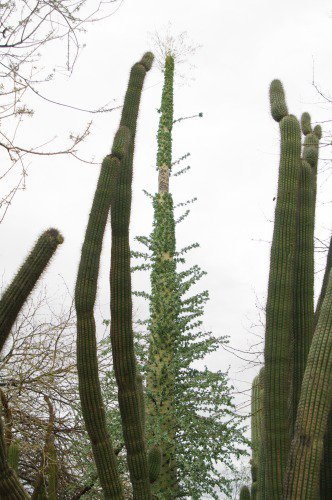
This Boojum Tree
This Boojum Tree is probably 30 feet tall or so. I'm guessing. At the very top, you can see the dried flowerhead, faintly. Up and down the sides are the little branches, covered with leaves, and there are leaves on the trunk. It's that time of year.
There is a dry place close to the top. This worries me. I am not sure whether the tree is truly healthy.
This particular Boojum Tree has been on the campus as long as I can remember, and always was fairly tall. And my memory goes back to around 1958 or 1960.
More Boojum Photos
Click thumbnail to view full-size


Closeups of Boojum Trees
These two photos are from the same cactus garden near the Student Union building. There are lots of other interesting plants in the same garden; I will show you a few later. They all do well together.
The other photo is the young Boojum Tree I found near the Social Sciences Building. I knew it was there, but I almost missed it, because I was thinking it would be tall, and it seems to blend right in.
As far as I know, these are the only Boojum Trees currently on the University of Arizona campus. Try as I might, I was unable to find any others in the cactus garden.
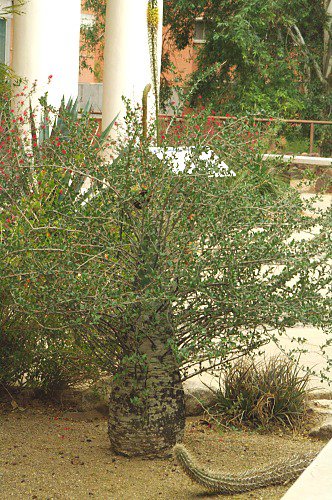
A Real Surprise
The best Boojum in the city
I came across this one quite by accident. I was simply driving around in a neighborhood near Tucson, and happened to notice this one. It is amazingly healthy, and has to be at least 30 feet tall, maybe 40. There was a car at the base, which was not even a third as high as the saguaro next to the Boojum Tree. I imagine a car is usually about 4 or 4 1/2 feet tall. This tree has four big branches at the top, along with what's left of last year's flowers. I'll try to get the flowers this summer.
The first photo shows the Boojum in full. The next few are various details. The final picture is of a House Sparrow sitting on one of the thin branches. I think there were five of them flying around and landing on these little branches. If you have read much of my writings, you know I can't pass by an opportunity to notice a bird!
The best Boojum, full size
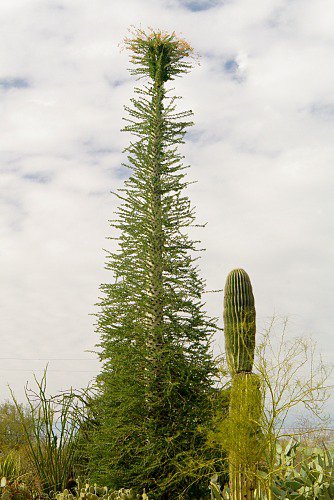
Details
Click thumbnail to view full-size




What is a Boojum?
Did you ever hear of a Boojum Tree before?
Boojum at Boyce-Thompson Arboretum
Boyce-Thompson Arboretum is a wonderful place. It's located near Superior, Arizona, west of Phoenix.
I caught this Boojum as it was in its "fall" colors, about to lose its leaves. In the first photo, you can compare this plant to the Italian Cypresses in the distance. Other plants also give you an idea of size. This is a pretty reasonable specimen.
Boyce-Thompson Boojum
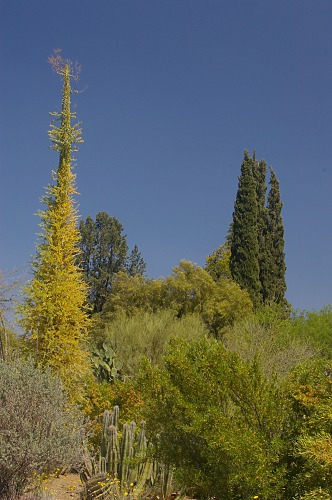
Closeup, more or less
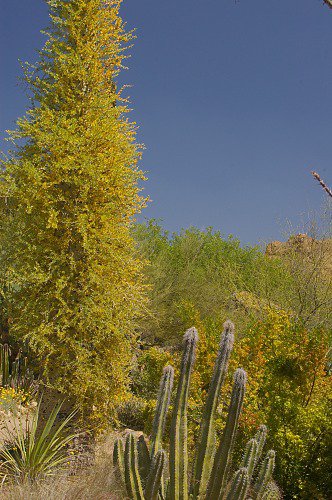
More Photos Coming Soon
(I hope)
Harrison Yocum (see my lens on his life) had three Boojum Trees in his yard. I photographed one of them, but I don't know where the picture is. I'll post it when I find it, so stay tuned.
The Arizona-Sonora Desert Museum also has several Boojum Trees in its gardens. I have a photo of one of them in the dormant stage, but I think I'll go take some pictures this time of year.
All in all, if you CAN grow a Boojum, you will be a REAL desert gardener. I hope this little article has given you enough information to get started. Have fun!
Learning about Boojums and Baja California
Available from Amazon
Field Guide to the Common and Interesting Plants of Baja California
by Jeanette Coyle
Baja California Plant Field Guide
by Rebman, Jon P., Roberts, Norman C.

